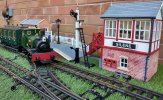WD40:
- WD 40 is originally to keep moisture away to keep from rusting, not a penetrant.
- WD stands for Water Displacement formula 40... the idea is that it would displace moisture and leave a film, and then this would keep moisture from rusting/corroding metal.
I agree with Neil, the weep holes in the bottom of the motor housing are important, to keep water from building up. Make sure you have a small one in each corner.
There is no way to keep water completely out, they would have to be hermetically sealed, not easily possible with the moving arm that protrudes from the body.
Since air gets inside, the action of cooling at the end of the day, pulls air into the housing... then when the sun hits it, the air expands.... if any water has collected inside (natural condensation) hopefully it goes out the drain holes, and then further warming should push out any humid air. Then the cycle repeats.
Often, when people try to seal up these motors, all they do is wind up trapping liquid inside, making matters worse.
Greg





